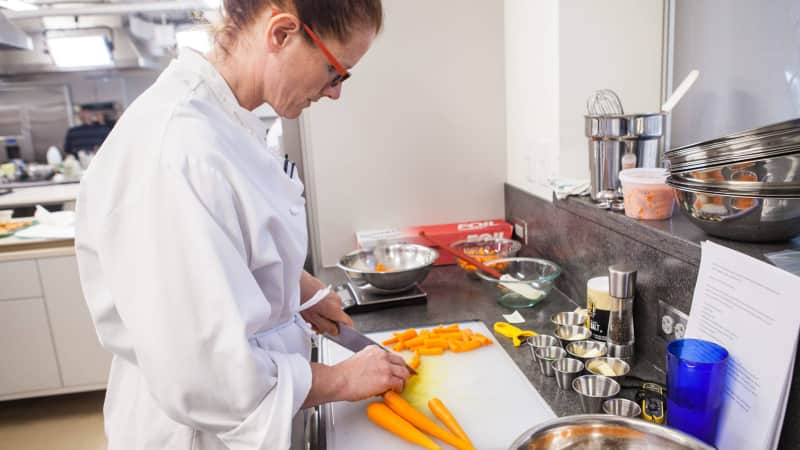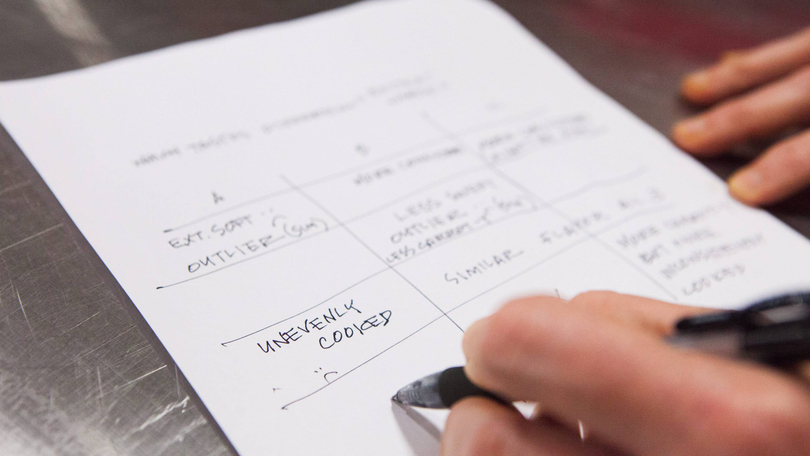My Goals
- Tender throughout
- Even seasoning
- Interesting flavors
Published Nov. 29, 2016.

We all should eat more carrots. They’re nutritious, inexpensive, and available year-round, and their cheery color brightens any plate. But if eating carrots means roasting them for 45 minutes or grating a pile of them for a salad, most of us are unlikely to prepare them often. That’s why I decided to make something that, at first blush, seems deeply unfashionable: boiled carrots.
Before you scoff, let me extol the virtues of boiling. First, it requires minimal equipment: saucepan, lid, and burner. Second, it’s fast—about 25 percent faster than steaming. That’s because boiling water transfers heat to the carrots faster than steam does, thus breaking down pectin more quickly so the carrots soften more quickly. And the clincher? Salt in the cooking water seasons the carrots as they cook, which makes them tastier than carrots that have received a superficial postcook sprinkle.
But is a recipe required for something as simple as boiled carrots? Pretty sure I could just wing it, I brought 2 cups of water (minimal water would mean minimal time wasted) and ½ teaspoon of salt to a boil and added 1 pound of peeled, trimmed carrots that I had cut into chunky rods. Seven minutes later, I drained them. The carrots were beautifully tender throughout, but they were also underseasoned and boring. A simple recipe would be helpful after all.


First, the seasoning. I recalled a culinary instructor who used to stride through the kitchen bellowing, “Cooking water should be salty! Salty like the SEA!” He never explained it, but it turns out there’s a scientific reason: Boiling vegetables in unsalted water causes them to lose some of their natural salts and sugars (read: flavor). Boiling them in water that has the same salt concentration as seawater, about 3 percent, helps the vegetables retain that flavor. As a bonus, vegetables cooked in heavily salted water soften more quickly than those cooked in unsalted water. (This is because the sodium ions in salt displace some of the calcium ions that give strength to the vegetable’s pectin network.)

Carrots cooked in a 3 percent solution (1 tablespoon salt to 2 cups water) were a little too salty for me, but the science was right: The high salt concentration boosted the flavor and decreased the cooking time by more than a minute. I compromised with 2 cups of water, 2 teaspoons of salt, and a 6-minute cooking time.
From there, I developed five flavor variations that could be matched with different types of meals. Each variation had either butter or oil to provide a bit of sheen and richness and help the flavorings cling and either citrus juice or vinegar to balance the carrots’ natural sweetness. Some chopped fresh herbs countered the carrots’ earthiness, and a bit of spice added interest.
Have you heard about the latest fashion in vegetables? It’s boiled carrots.
Tender throughout
Submerging carrots in boiling water extracts some of the pectin and calcium from their cell walls, which allows them to soften more quickly. And salting that water speeds softening even more and helps the carrots retain their natural flavor.
Even seasoning
Salt in the cooking water seasons the carrots as they cook, which makes them tastier than carrots that have merely received a superficial postcook sprinkle.
Interesting flavors
Finishing touches of fat, acid, herbs, and spices make these simple side dishes a complement to any meal.

This is a members' feature.